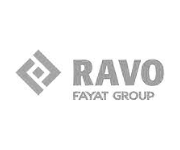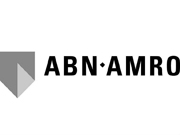Being self-aware: do you see what they see in you?
In this article, I discuss the feedforward quality – being self-aware. It strikes me that people are less able to look at themselves than they think. This is confirmed time and again by the surprised, curious, desperate, and sometimes relieved reactions to the feedforward results, which I give them during an individual interview. These results are of a 360-degree feedforward measurement how they, in comparison with their environment, look at the qualities in their own behavior. People often think they know themselves well and also that they know how they come across to others. It often comes as a surprise when those others seem to think differently about that…
Being self-aware: the foundation of self-development
Being self-aware and being able to look at your own behavior is essential when you want to learn, grow, and continue to develop yourself. It is a critical success factor in the achievement of business as well as personal success. People who are more self-aware perform better at work. They are promoted sooner and manage more effectively. In the personal sphere, they also seem to be more effective. An example is dealing with conflicts. Self-aware people seem to be better able to see their own contribution and, consequently, they seem to be better attuned and adapted to the other person if necessary. This is to make and keep relationships and interactions with friends, partners, children, colleagues, and important others effective.
Own image versus the image of the environment
With the feedforward analysis™, a positive 360-degree feedback instrument to which I already referred at the beginning of this blog, a  person can select one’s qualities in behavior. In addition, one’s environment is also invited to select appropriate qualities in behavior for that person. Then, one is asked to establish a top ten in qualities. Often when the feedback of the results takes place, the first thing the feedforward participant looks at is ‘am I thinking the same things as my environment?’
person can select one’s qualities in behavior. In addition, one’s environment is also invited to select appropriate qualities in behavior for that person. Then, one is asked to establish a top ten in qualities. Often when the feedback of the results takes place, the first thing the feedforward participant looks at is ‘am I thinking the same things as my environment?’
Generally speaking, I see three possible outcomes and associated responses to them:
- ‘I am thinking the same things as my environment.’
Seven to ten of the top ten qualities that have been selected for you by you and the environment are similar. This feedback often results in a big sigh of relief and sparks in the eyes. Often, they say: “Yes, I knew it. Nice!”
You look at your qualities the same way your environment does. So, even when you will turn points for improvement into action (because feedforward is also done to improve), your environment will be able to understand and support them. Only 8.3% of a total of hundreds of participants receives this feedback. Without exception, they are happy with the feedforward and they recognize it. The confirmation that they receive from their environment regarding their qualities and possible points for improvement means that they take action and formulate an individual improvement plan relatively more quickly: “I recognize my qualities and possible points of attention. It is now time to work on my points for improvement based on my qualities, both of which are endorsed by my environment!” - ‘My self-image is partly similar to that of my environment.’
Four to six of the top ten qualities correspond when we compare the top ten of the participant with that of the respondents. This feedback often results in a frown and sometimes a bit of despair. Often, there is a remark like ‘hmmm, strange, because I do x and y but apparently, they do not see it…?’
Firstly, there is indeed a 50% overlap between the qualities selected by you and your environment! And, indeed, they apparently also see it differently than you do. However, that does not necessarily mean that you or your environment are wrong or lying. In this case, your environment thinks that other qualities match you better. It is interesting to look at how you can shape the qualities that you would have liked your environment to notice with emphasis differently so that they are seen? 66.3% of the feedforward participants receive this feedback. This seems to be the average in the Netherlands. People are a bit self-aware but things can be better, especially when the starting point is ‘learning and developing,’ which is often the reason to ask feedforward from your environment. In order to learn and to rise above the average, it is important to search in such a conversation for those qualities in behavior that will bring this participant improvement. - ‘My self-image hardly corresponds to the image my environment has of my qualities.’
Only one to three of the qualities you selected in your top ten correspond to those that the respondents put in their top ten for you. The fact that the image of the environment differs greatly from that of one’s own image means that the participant often needs a little more time to process the feedforward and to understand its value. These feedback conversations are sometimes a little trickier to get started. The respondents and the participant seem to see other qualities and the gap between them must first be bridged. When the participant succeeds in recognizing and acknowledging the perspective of the respondents, the next important step in these conversations follows: how can I increase my self-awareness?More than a quarter (25.4%) of the feedback interviews proceed this way. Some of these conversations, therefore, start in an awkward way. After finding recognition and acknowledgment of the perspective that the environment has of them, all participants show a willingness to search for improvement.
3 reasons why our self-image is not always right
What is it that makes our image often not entirely consistent (or not at all) with the image our environment has? Tasha Eurich, the author of the book The Power of Self-Awareness in a Self-Deluded World, teaches us that there are three reasons for the mismatch in images.
- First, we all have our blind spots. “We are wired to operate on autopilot, unaware of how we are behaving, and why.” We simply do not
 see it; we respond to our autopilot and show behavior that we always show. That behavior once worked well for us so we repeat it. Consequently, we do not notice this specific behavior may no longer be effective in the current context.
see it; we respond to our autopilot and show behavior that we always show. That behavior once worked well for us so we repeat it. Consequently, we do not notice this specific behavior may no longer be effective in the current context. - There is also the “feel-good” effect: we feel happier when we see and imagine ourselves in a positive light. We choose those qualities that we think are the most suitable qualities to be seen as successful by the environment.
- As far as Eurich is concerned, the last reason has to do with ‘the cult of self,’ which is the idea that we are focused on ourselves more and more because of the increase in popularity of various social media. We are focused on ourselves too much and know increasingly less how we actually come across to the environment.
Eurich’s research raises the following image. “While 95% of people truly think they are self-aware, the percentage is closer to 10-15%,” says Eurich. The analysis of the feedforward results is reasonably consistent with this picture. Nearly 75% of the participants think they are self-aware, but only 8.3% of the participants truly is.
How can you increase your self-awareness?
Tasha Eurich: “What is scary is that the least competent people are usually the most confident in their abilities.”
The question now is: “how can we increase our self-awareness?” Eurich says there are two aspects to which attention should be paid: our internal and external self-awareness.
Being self-aware (internally) is about understanding your own values, passions, ambitions…
Being self-aware (externally ) is understanding how you come across to the environment, meaning from the outside to the inside, and understanding how others see you.You can increase your internal self-awareness in various ways. People who want this often find a coach and, together with the coach, look for their values, passions, and ambitions. However, external help may not always be required. Keeping a diary, in which you write down and examine what activities you like, helps you on your way. Your values, passions, and ambitions become clear by looking at your notes after a while, finding themes and the central thread in that which gives you a feeling of meaning, energy, and happiness.
To improve your external self-awareness, Eurich suggests that you seek a ‘loving critic’ in your environment. A loving critic is someone who wants to make an effort to provide you with feedback in a constructive way and who sees where your qualities lie as well as where improvement is needed for a more effective functioning and successful realization of your ambitions. This should be positive feedback that is growth-oriented and given by your environment based on your behavior. All in all, even you need feedforward!
I am curious to see which of the 48 qualities that are central to the feedforward analysis™ are in your top ten. To what extent does your self-image match the image of your environment, do you think?
Do you see what they see in you?







